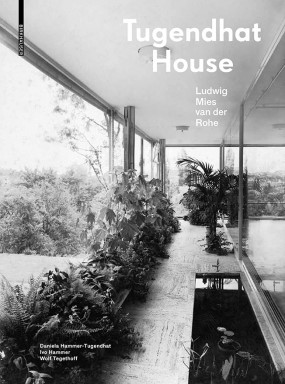DANIELA HAMMER-TUGENDHAT, IVO HAMMER, WOLF TEGETHOFF
The appeal of this monograph lies in the published photographs which reveal an unusual view of the house and highlight the intended fusion between architecture and nature.
The experimental artistic colour photographs by Fritz Tugendhat are among the pioneering achievements of amateur photography; that these images have remained intact is indeed remarkable.
Daniela Hammer-Tugendhat – Hammer, Ivo – Wolf Tegethoff, Tugendhat House. Ludwig Mies van der Rohe, (Birkhäuser-de Gruyter) Basel, Berlin, Boston, Munich, Beijing 2014 (in English); ISBN: 978-3-99043-509-0
The book is available for purchase at Villa Tugendhat. It may also be ordered online here.

